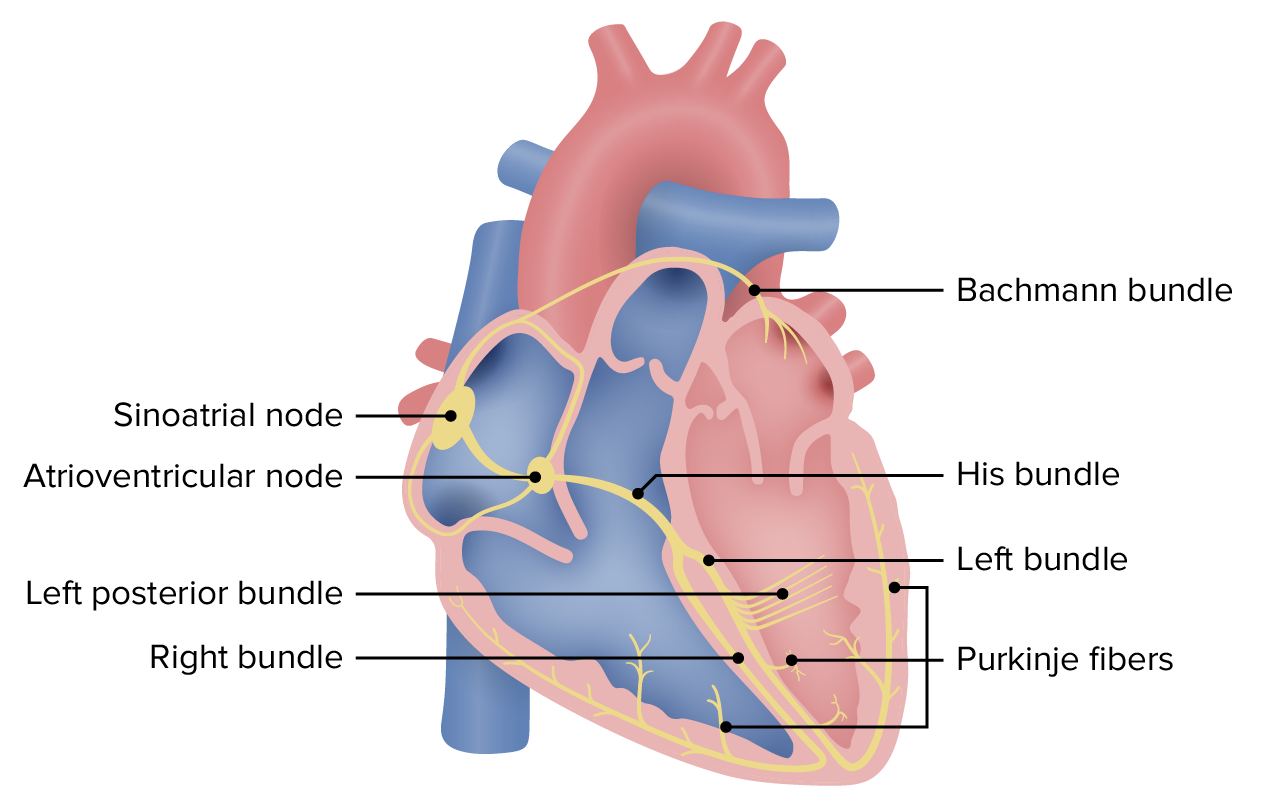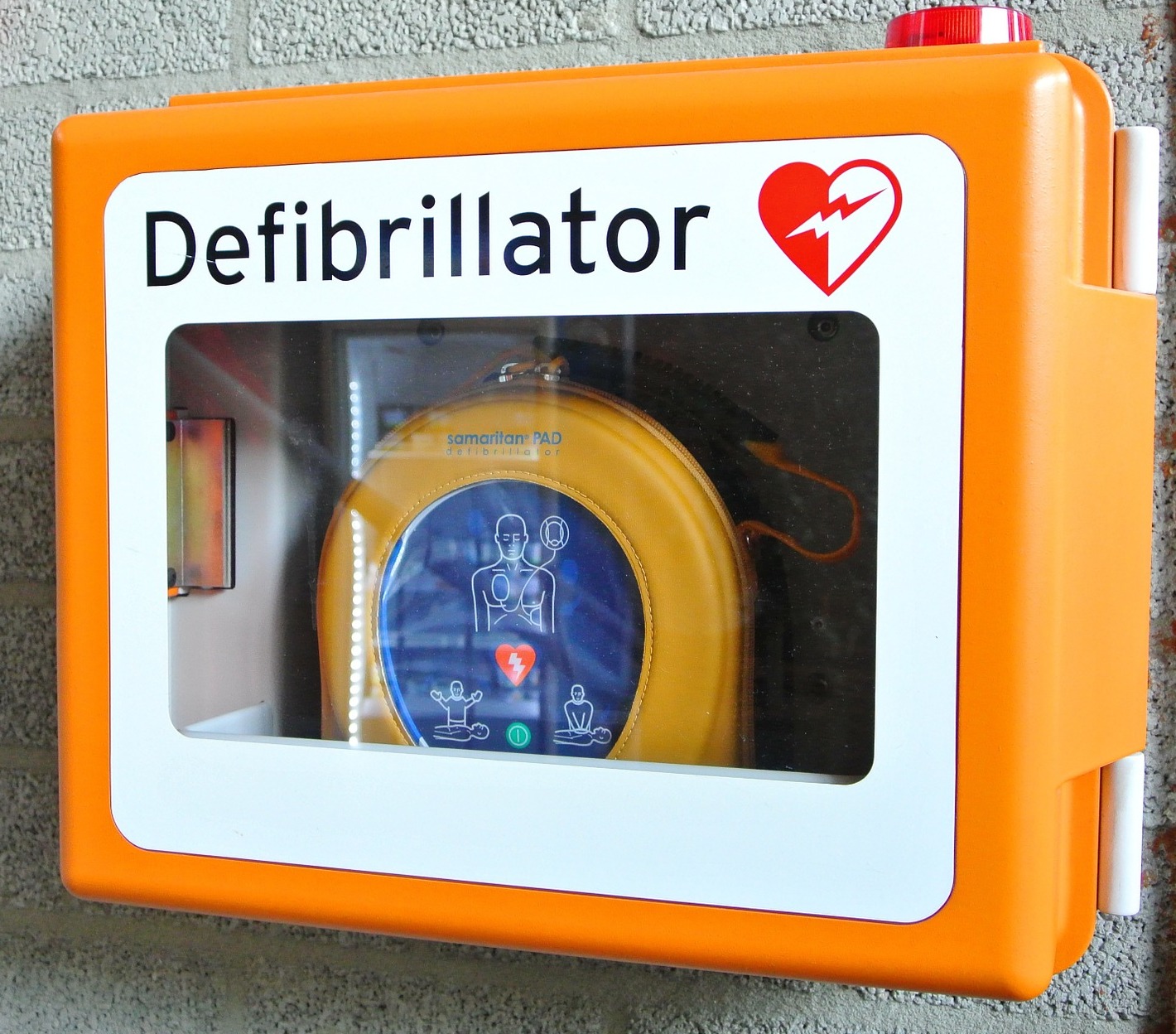Playlist
Show Playlist
Hide Playlist
Ventricular Fibrillation/Tachycardia
-
Emergency Medicine Cardiac Arrest 2.pdf
-
Download Lecture Overview
00:01 Hello. 00:02 Now, we're gonna talk about the second part of cardiac arrest or advanced life support. 00:07 So, there are three major cardiac arrest rhythms that we need to be aware of. 00:14 Ventricular fibrillation and ventricular tachycardia, pulseless electrical activity, and asystole, and we're gonna talk in some detail about each of those three identifying some of the key similarities and differences between them. 00:28 Let's start off with V-Fib and V-Tach. 00:31 So, these rhythms both represent disorganized electrical conduction which originates in the ventricles. 00:39 There's a number of different causes for a ventricular fibrillation and tachycardia but they're most strongly associated with primary heart disease in particular coronary ischemia, so, myocardial infarctions, etc. 00:53 However, you can also see V-Fib and V-Tach in the setting of structural heart disease, inherited channelopathies, and other clinical situations. 01:03 Least commonly, you see V-Fib and V-Tach with systemic metabolic derangements things like electrolyte disturbances, autoimmunity, toxic ingestions but that's really quite rare. 01:15 The vast majority of these are caused by heart attacks. 01:18 So, here's just a review on ventricular fibrillation like we said in the last lecture, this is one of our two shockable rhythms. 01:26 So, this is randomly fluctuating, completely disorganized electrical activity, no pattern, no QRS complexes, the heart is literally just going, "blblblblbl" in the chest, it's not actually beating. 01:40 Meaning, that there's no cardiac output whatsoever associated with this because the heart's not contracting. 01:46 This rhythm, if it’s not terminated, is completely incompatible with life. 01:51 By contrast, here's V-Tach. 01:55 So, we mentioned this in the prior lecture as well but V-Tach is organized, it's just bizarre. 02:01 So, these QRS complexes are big and tall and wide but they are organized and they are regular. 02:09 Now, you wanna think about V-Tach anytime you see tachycardia. 02:15 Meaning, a heart rate of greater than a hundred most commonly greater than 150, that means your QRS complexes are gonna be coming along more than every 3 millimeters on your tracing or more than every 2 millimeters in the case of a heart rate of 150. 02:30 In this case again, the QRS is wide, so, it's got to actually be wider than 3 millimeters to be considered V-Tach, but usually it's pretty obvious, these are a big, wide, very strange looking complexes. 02:44 And patients in V-Tach, can be completely pulseless, apneic, and dead. 02:50 They can be completely stable and in some cases, asymptomatic, or they can be anywhere in between. 02:57 So, the important thing with V-Tach is when we talk about it in the context of cardiac arrest, we're talking specifically about pulseless V-Tach, meaning we don't wanna treat V-Tach in a patient with a pulse especially a stable patient the same way as we would in a pulseless patient. 03:14 Clearly, a stable conscious patient is gonna hate if we start CPR on them. 03:19 Alright, so single most important intervention for V-Fib and V-Tach, we alluded to this before but I wanna emphasize again, it is to defibrillate. 03:28 Now, the great thing about defibrillation is this is such an important intervention. 03:33 We've started putting defibrillators in public places all over the world. 03:37 So, you can now find defibrillators in shopping malls, at sports stadiums, in the back seats of police cars, all kinds of places around the world where first responders can access them easily and use them quickly to save lives when needed. 03:53 So, we're gonna go through the V-Fib and V-Tach algorithm now in some detail. 03:58 So, first and foremost, when you have a cardiac arrest, you gonna wanna get help right away, and you're gonna wanna initiate CPR, the highest quality CPR you can possibly manage. 04:09 Next priority is to get your hands on a defibrillator as quickly as you can and to administer a shock for V-Fib or V-Tach. 04:17 We don't shock other rhythms but for these rhythms, electricity is key. 04:21 Your next maneuver, is gonna be to continue CPR for five cycles or 2 minutes before you perform another rhythm check. 04:30 At that point, if you're still in a shockable rhythm, you're going to administer yet another shock, and this is also when you're gonna give a vasopressor drug, like epinephrine. 04:39 After that, we're gonna continue CPR for another 5 cycles or 2 minutes where once again we check the rhythm, we defibrillate if we're still in a shockable rhythm, and now we're gonna think about use of antiarrhythmic drugs, in particular amiodarone.
About the Lecture
The lecture Ventricular Fibrillation/Tachycardia by Julianna Jung, MD, FACEP is from the course Cardiovascular Emergencies and Shock. It contains the following chapters:
- Three Cardiac Arrest Rhythms
- Ventricular Fibrillation and Tachycardia
- Defibrilation as Management for Arrest
Included Quiz Questions
What is the most common cause of ventricular fibrillation and ventricular tachycardia?
- Coronary artery ischemia
- Channelopathies
- Electrolyte disturbances
- Autoimmune diseases
- Cardiac toxins
Which of the following does NOT describe ventricular fibrillation?
- Presence of QRS complexes
- A shockable rhythm
- Randomly fluctuating rhythm
- Completely disorganized rhythm
- Incompatible with life
What is the single most important intervention for ventricular fibrillation and pulseless ventricular tachycardia?
- Defibrillation
- Chest compressions
- Administration of epinephrine
- Administration of amiodarone
- Calling for help
Customer reviews
5,0 of 5 stars
| 5 Stars |
|
2 |
| 4 Stars |
|
0 |
| 3 Stars |
|
0 |
| 2 Stars |
|
0 |
| 1 Star |
|
0 |
It was explained in a good way. It's easy to understand and it helps avoiding confusions.
I love the simplicity and energy Professor Jung puts into the lecture. Thank you tremendously for all of your lectures!





